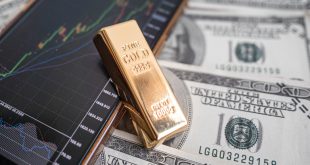The dollar started the fourth quarter of 2021 near its highest levels in the year and is heading towards achieving its best weekly performance since June, as investors expect the Federal Reserve, which appears to be inclined towards monetary tightening, to raise interest rates at a faster pace than its major peers.
The dollar was also supported as a safe-haven asset by cautious market sentiment due to COVID-19 concerns, volatile Chinese growth, and lack of progress in Washington ahead of a looming deadline to raise the US government’s borrowing cap.
The dollar index settled at 94.287, after gaining 1.1 percent since the beginning of this week, which is the largest weekly rise since late June.
The euro also settled today, Friday, at $1.1578, but it fell about 1.3 percent in the week, and fell from a major support level at about $1.16, touching its lowest level since July 2020.
The yen rose from a 19-month low hit overnight, but lost 0.6 percent for the week and doubled that amount in two weeks as rising US Treasury yields polarized inflows from Japan into the dollar. The Japanese currency was last at 111.21 per dollar.
The benchmark 10-year Treasury yields are up for the sixth week in a row and real 10-year yields, minus inflation, are rising much faster than their European counterparts.
Commodity-linked currencies jumped against the dollar on Thursday following a Bloomberg report that China directed energy companies to source winter supplies at any cost, but came under pressure on Friday.
Beijing is rushing to deliver more coal to utilities to restore supplies in light of an electricity crisis that has disrupted markets due to its potential negative impact on economic growth.
The Australian dollar fell 0.3 percent to $0.7203 and fell 3.6 percent in the third quarter of the year, recording the worst performance among the currencies of the Group of Ten major countries against the dollar, as prices of iron ore, which is Australia’s main export commodity, fell sharply.
 Noor Trends News, Technical Analysis, Educational Tools and Recommendations
Noor Trends News, Technical Analysis, Educational Tools and Recommendations




